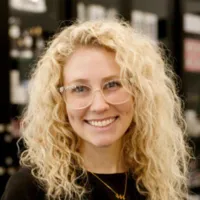

NUTRITIONAL HEALTH ARTICLES

Worried About Warts?
Something that I often see in my practice in patients of all ages—but most frequently in children—is verruca vulgaris or common warts. I’ve seen patients in the clinic who present with all types of warts, from just a couple of rough, callused bumps on the fingers to flat-topped, skin-colored bumps around the nostrils to clusters of thickened, warty plaques on the knees and elbows to warts that are jutting out from underneath the fingernails.
Warts are growths on the skin or mucous membranes caused by a virus called human papillomavirus, or HPV. They are contagious and usually spread through direct contact with affected skin or surfaces. Warts can become irritated or itchy over time, but it is important to avoid picking or scratching them as there is a risk they may spread to other areas of the body. Warts can be stubborn to treat, so I inform my patients that they should plan on multiple treatments about four weeks apart.
Warts often appear on areas of the body that are more prone to trauma, such as the knees, elbows, and hands. These growths can spontaneously resolve on their own, but it may take months or even years for this to occur. There are a few at-home remedies and in-office treatment options that can be used to resolve these growths.
At Home Remedies
Apple cider vinegar (ACV) is one of my “go-to” remedies. Simply soak a cotton ball in ACV, apply the cotton ball directly to the warts, tape it on with a bandage, and leave it on overnight. In the morning, remove the bandage and wash off the skin.
Another at-home remedy is the use of over-the-counter products that contain salicylic acid, such as Compound W®. Apply the product to the skin according to package directions. The idea with these topical treatments is to cause irritation to the warts. Once the lesions are irritated or the skin peels, stop applying these products and let the area heal. If the warts are still present once the area has healed, resume treatment.
Lastly, several studies show improvement in warts by supplementing with oral zinc.
In Office Treatments
In my office, cryotherapy or “freezing” is often the first line of treatment. Liquid nitrogen is applied to the warts for about ten seconds at a time for two cycles. Often, freezing is paired with a candida (yeast) antigen injection. A drop of the antigen is injected directly into one of the warts in a general area (not every wart needs to be injected). The dead yeast antigen sends a signal to the immune system, helping the body to recognize the presence of the virus and clear it out.
Another treatment option is the use of cantharidin, which I tell my patients is also known as a “blistering beetle juice.” The formula is applied directly to the wart then covered with a bandage. Hours later, the area is washed off thoroughly with soap and water. Within twenty-four hours, a blister will form, which gradually dries up and peels away, hopefully taking away the lesion with it as it heals.
Some growths on the skin may appear to be warts but may end up being another type of skin lesion or possibly even skin cancer. If you are dealing with warts and have tried at home remedies with little to no success, please call Riverside Medical Arts at (435) 628-6466 to make an appointment to have your skin evaluated, or visit riversidemedicalarts.com.
